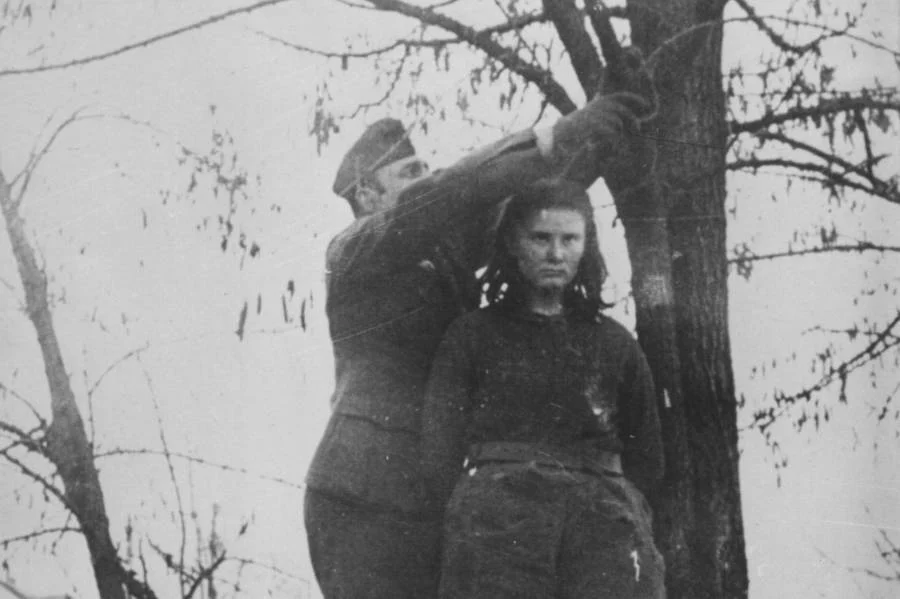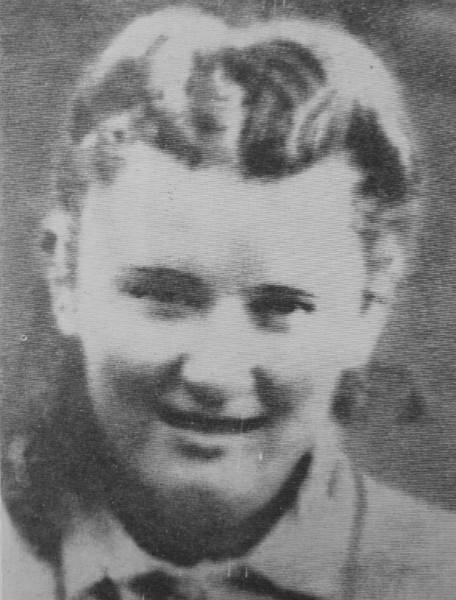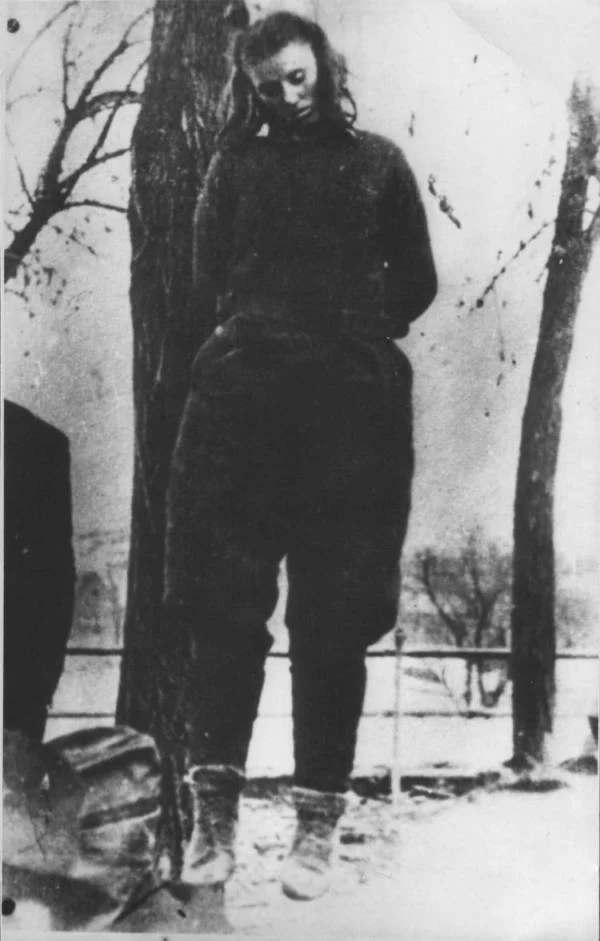Some heroes are forged in fire. Others are born with a spark so bright, even history can’t dim it. Lepa Radić was that kind of spark—a teenage girl who, instead of hiding in the shadows of war, walked straight into its heart with a fire in her soul and courage that would shake generations.
She wasn’t an officer. She wasn’t a general. She didn’t lead battalions. But at just 17, she stood unbroken before her Nazi captors, refusing to betray her comrades—even with a noose waiting at her feet. That’s not just bravery. That’s legendary.

When War Came Crashing Into Her World
Back in 1941, Yugoslavia was caught in the jaws of World War II. Hitler had launched his invasion on April 6, crushing resistance in days. But even after the formal army fell, new forms of rebellion began brewing—deep in the forests, mountains, and villages.
Two groups rose: the Chetniks and the Partisans. While the Chetniks followed a monarchist ideology, the Partisans—led by Josip Broz Tito—were communists fighting for freedom, equality, and revolution. Amid this whirlwind of resistance and repression, one teenage girl chose her side.
Lepa Radić, born in Gašnica in 1925, didn’t sit idly by while her country burned. She stepped up—and never looked back.
Video: Lepa Radić: The 17-Year-Old Who Defied the Nazis
From Schoolbooks to Gunpowder: A Teenage Rebel Emerges
Lepa wasn’t raised to be passive. Her family was deeply involved in anti-fascist movements. Her uncle was an activist. Her parents were supporters of the resistance. It wasn’t long before she followed their lead.
At just 16, Lepa was arrested with her family by the Ustashe—a brutal pro-Nazi regime operating in Croatia. While imprisoned, she didn’t give in. And thanks to a daring raid by the Partisans, she was rescued weeks later.
But she didn’t just celebrate her freedom—she turned around and fought for everyone else’s.
Lepa joined the 7th Partisan Company of the 2nd Krajiski Detachment. She wasn’t there for glory. She was there to serve. She carried supplies, helped the wounded, and escorted vulnerable civilians out of danger zones—all while bullets flew overhead.
The Day Courage Became Her Legacy

In February 1943, while escorting a group of women and children to safety, Lepa was captured by German forces. She didn’t go down easy. She fought fiercely, refusing to surrender until she ran out of ammo.
The Nazis had her. But they didn’t break her.
Over the next three days, she was interrogated and tortured—pushed to name her fellow fighters. They promised her life in return for information. She said nothing.
Even when dragged to the gallows, she stood tall. No tears. No pleas. Just truth.
Her Last Words? A Masterclass in Bravery

Just before the noose tightened, the Nazis gave her one final chance: give us names, and we let you go.
Her reply? Pure steel.
“I am not a traitor of my people,” she said. “Those whom you are asking about will reveal themselves when they have succeeded in wiping out all you evildoers, to the last man.”
And then, at just 17, she was hanged.
But instead of extinguishing her light, they turned it into a beacon.
A Face That Refused to Fade
A photograph of Lepa standing on the gallows went viral before “viral” even existed. Her calm, fearless expression etched itself into Yugoslavian history. She didn’t just become a martyr—she became a symbol of what it means to stand for something bigger than yourself.
In 1951, she was posthumously awarded the Order of the National Hero—an honor given to only the bravest resistance fighters. But for most people, her legacy didn’t need a medal. Her face said everything.
Why Lepa’s Story Still Hits Hard Today
Video: The BRUTAL Execution Of Lepa Radic – The Teenage Girl Executed By The Nazis
Let’s be real: in an age full of noise, Lepa Radić reminds us what real courage looks like. It’s not performative. It’s not loud. It’s not about recognition. It’s standing in silence, with your chin up, refusing to betray what you know is right—even if it costs you everything.
She wasn’t seeking fame. She didn’t live long enough to see freedom. But her act of defiance still echoes through classrooms, documentaries, and war memorials across the world.
She Was Just a Teenager—And a Titan of History
Most 17-year-olds are worried about exams, dates, or finding themselves. Lepa Radić found her purpose early—and paid the ultimate price for it. But what she left behind was far greater than one life. She gave a nation something to believe in.
She showed us that strength doesn’t require rank. That resistance doesn’t demand age. That even a single voice—when fueled by justice—can rattle the bones of evil.
Conclusion: Lepa’s Spirit Still Marches On
Lepa Radić didn’t live to see the world she fought for. But because of her, that world was possible.
Her story reminds us that the bravest voices don’t always belong to the oldest, the loudest, or the most powerful. Sometimes, they come from a teenage girl with nothing left to lose—and everything to protect.
In a world desperate for real heroes, Lepa stands tall, even in memory. A warrior, a rebel, and a beacon of resistance—forever 17, forever unbroken


